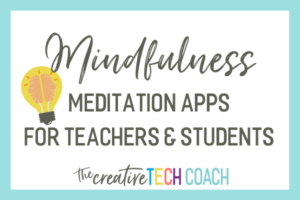Hey y’all! It’s our final blog post, and we are all busy getting our research prospectus complete. I’m also getting ready for my students’ first day of school tomorrow, so I’m here at my classroom finishing up a few final things. Our research plans involving using social media with English language learners are very dear to me, because I teach an English language immersion program in my second grade class. This is the second year I have taught this program, and I have a special place in my heart for ELLs.
After looking back over our literature review and examining the implications and our suggestions for future research, my group decided that research should be conducted to see if social media might affect academic language acquisition of English language learners (ELLs). The literature presented cases of students using social media for social language acquisition (Burke, 2013; Mitchell, 2012; Roura-Planas, 2010), and a number of studies discussed the importance of ELLs’ academic and social language acquisition, (Baker et al., 2014; Brozek & Duckworth, 2011; Cook, Boals, & Lundberg, 2011; Gersten et al., 2007). However, no literature seemed to indicate that social media could improve academic language acquisition. We believed that research first needed to be conducted to see if there was a relationship, and if there was, then later research could be conducted to determine how or to what degree social media affects academic language acquisition.
Our research design is a qualitative case study design. A qualitative research case study is appropriate because this research would be an in-depth study of a specific phenomenon–the academic language skills of ELLs whose teachers utilize social media; extensive data would be collected through interviews, surveys, observation, and standardized tests, like WIDA’s (World-Class Instructional Design and Assessment) W-APT and ACCESS, and would include quantitative data (Gall, Gall, & Borg, 2010).
The participants and setting would be English language learners in middle and high school classes at a large school district with a large number of ELLs. Purposeful sampling will be utilized to study the specific phenomenon of the effect of integrating social media into instruction on ELLs academic language acquisition (Gall, Gall, & Borg, 2010). Participants in multiple grades and classes will be included in order to represent various level of academic language proficiency. During the course of the study, the participants’ teachers would leverage social media in their language instruction, for instance for obtaining information and for producing language. The study would take place over the course of a year.
An interpretational analysis will be used to evaluate the data collected from the interviews and observations to “identify constructs, themes, and patterns that best make meaning of the data” (Gall, et al., 2010, p. 350). Further, a comparison of students’ prior year ACCESS scores would be compared ACCESS scores at the end of the study to determine if students were approaching academic language proficiency. This qualitative study could most certainly lead to more, quantitative research on the phenomenon, such as what degrees of improvement existed in the academic language acquisition of ELLs.
References
Baker, S., Lesaux, N., Jayanthi, M., Dimino, J., Proctor, C. P., Morris, J., Gersten, R., Haymond, K., Kieffer, M. J., Linan-Thomson, S., & Newman-Gonchar, R. (2014). Teaching academic content and literacy to English learners in elementary and middle school (NCEE 2014-4012). Retrieved from the Insitute of Education Sciences website: http://ies.ed.gov/ncee/wwc/publications_reviews.aspx.
Brozek, E., & Duckworth, D. (2011). Supporting English language learners through technology.
Educator’s Voice, 4,10-15. Retrieved from https://goo.gl/EbwBdP
Burke, A. (2013). Creating identity: The online worlds of two English language learners.
Language and Literacy, 15(3), 31-49. Retrieved from http://search.proquest.com/ docview/1430863801?accountid=12085
Cook, H. G., Boals, T., & Lundberg, T. (2011). Academic achievement for English learners: What can we reasonably expect? Phi Delta Kappan, 93(3), 66-69. Retrieved from https://www.wida.us/get.aspx?id=485ey
Gall, M. D., Gall, J. P., & Borg, W. R. (2010). Applying educational research: How to read, do,
and use research to solve problems of practice(6th ed). Boston, MA: Pearson Education.
Gersten, R., Baker, S. K., Shanahan, T., Linan-Thompson, S., Collins, P., & Scarcella, R. (2007). Effective literacy and English language instruction for English learners in the elementary grades: A practice guide (NCEE 2007-4011). Retrieved from Institute of Education Sciences website: http://ies.ed.gov/ncee/wwc/publications/practiceguides.
Mitchell, K. (2012). A social tool: why and how ESOL students use Facebook. CALICO
Journal, 29(3), 471-493. Retrieved from http://goo.gl/hGStf7
Roura-Planas, R. S. (2010). Social networking sites as technology enhanced learning communities towards autonomous language learning. Paper presented at the CiDd: II Congres Internacional de DIDACTIQUES 2010 [CiDd: Teaching II International Congress 2010]. Girona, Spain. Retrieved from http://hdl.handle.net/10256/2926
WIDA Consortium. (n.d. a). ACCESS for ELLs summative assessment [Web page]. Retrieved
from: https://www.wida.us/assessment/ACCESS/
WIDA Consortium, (n.d. b). W-APT [Web page]. Retrieved from: https://www.wida.us/
assessment /w-apt/




3 Responses
Ashley, I enjoyed your post very much and think that the research that you propose could be very interesting and informative. I think that we often forget that there are differences in academic language acquisition and social language acquisition just as we have what Ruby Payne (2008) discusses as different registers of language. These different registers may include formal, casual, and intimate to name a few (Payne, 2008). It would be interesting to see what differences are found when when combining the the more casual language register usually used in social media with the more formal language register of the academic environment and the effects of one on the other.
Using the W-APT (WIDA-Access Placement Test) is a great place to start as it is so widely used to determine the placement of ELL learners in so many environments. Is there a way to compare the students in environments where social media is used as an instructional tool to the state or national norms? Just a thought that occurred.
Thanks for sharing your literature review which was very interesting and informative as well as an exciting research proposal.
Reference:
Payne, R. (2008). Under-resourced learners: 8 strategies to boost student achievement. Highlands, TX: aha! Process, Inc.
I hope your first week with students is going well! I enjoyed hearing about your prospectus and very much hear your passion for the students you teach! I love the idea of utilizing Social Media for language acquisition, but I also have a few concerns. Being a middle school teacher, I'm hypersensitive to the issue of cyber bullying. What tools can teachers use to help prevent cyber bullying while allowing ELLs the opportunity to grow their language skills? What about the age of students? Neither Elementary or Middle School students are 'old enough' to use Social Media, could sites like Edmodo assist with keeping students safe in an online environment. I am very excited about your study! I look forward to researching and learning more about this myself.
Hi Ashley,
I think that the idea of using social media to ELL students is a great and unique idea. We all know that students not matter the language loves using social media. I personally did a research paper on social media in the classroom. And through that research paper I was able to see the benefits of social media within the classroom and how it allows teachers to go outside of the walls of the schools. Students are more likely to be engaged in the class if it is on a platform that they are already used of using. I think that ELL students will also see a positive benefit of using social media. Ashley I hope that all goes well in your academic ventures and as well as the school year of your students.